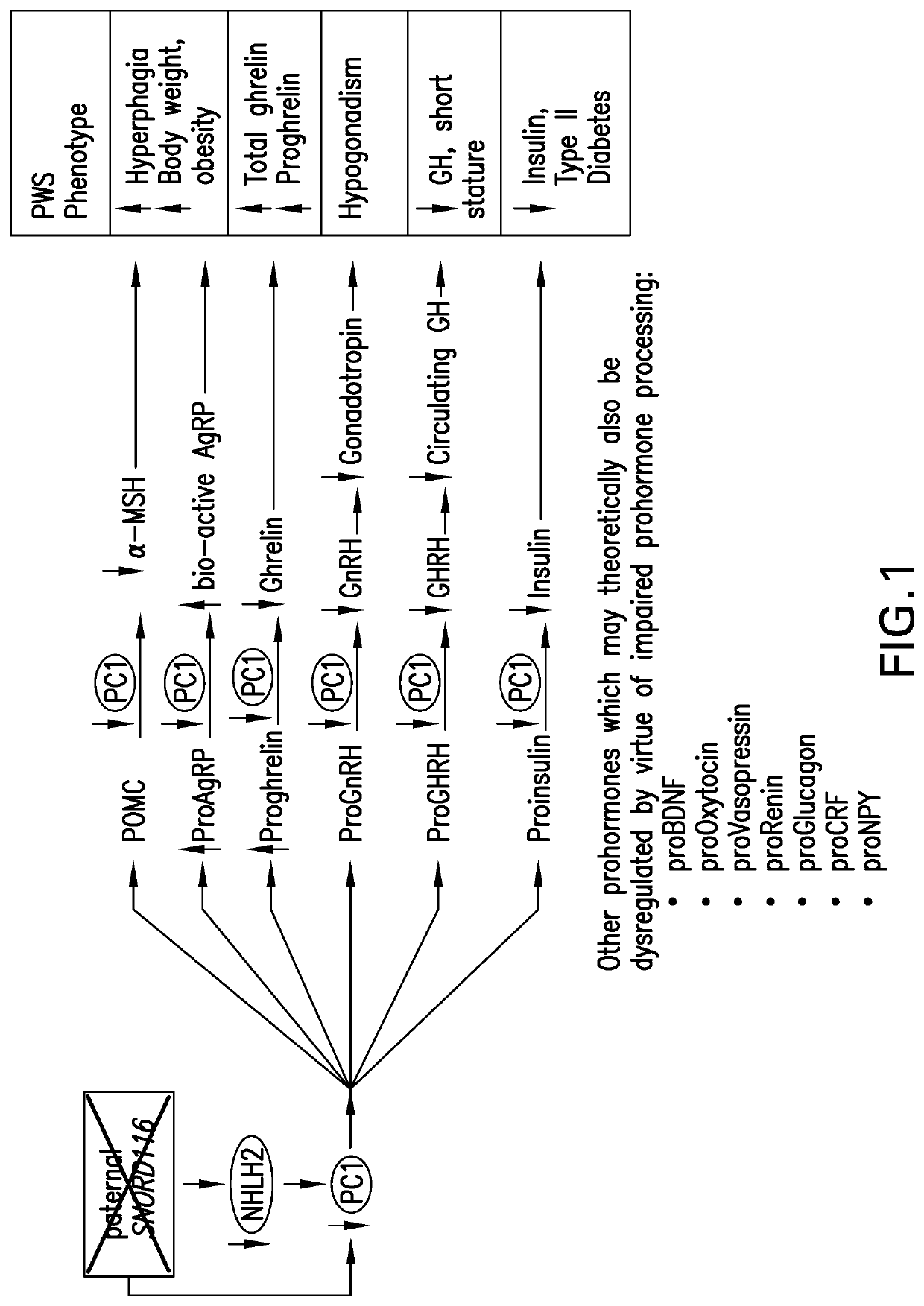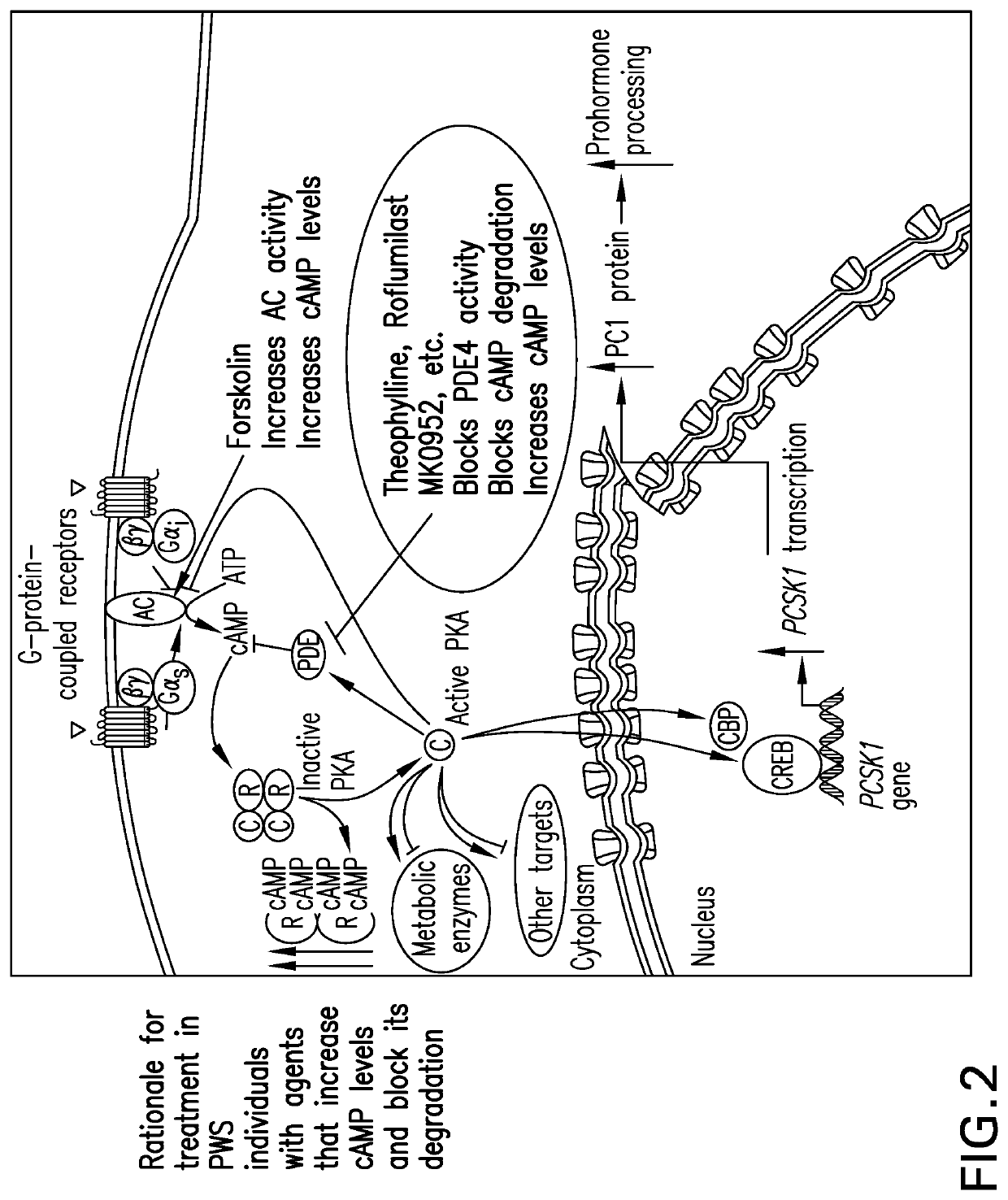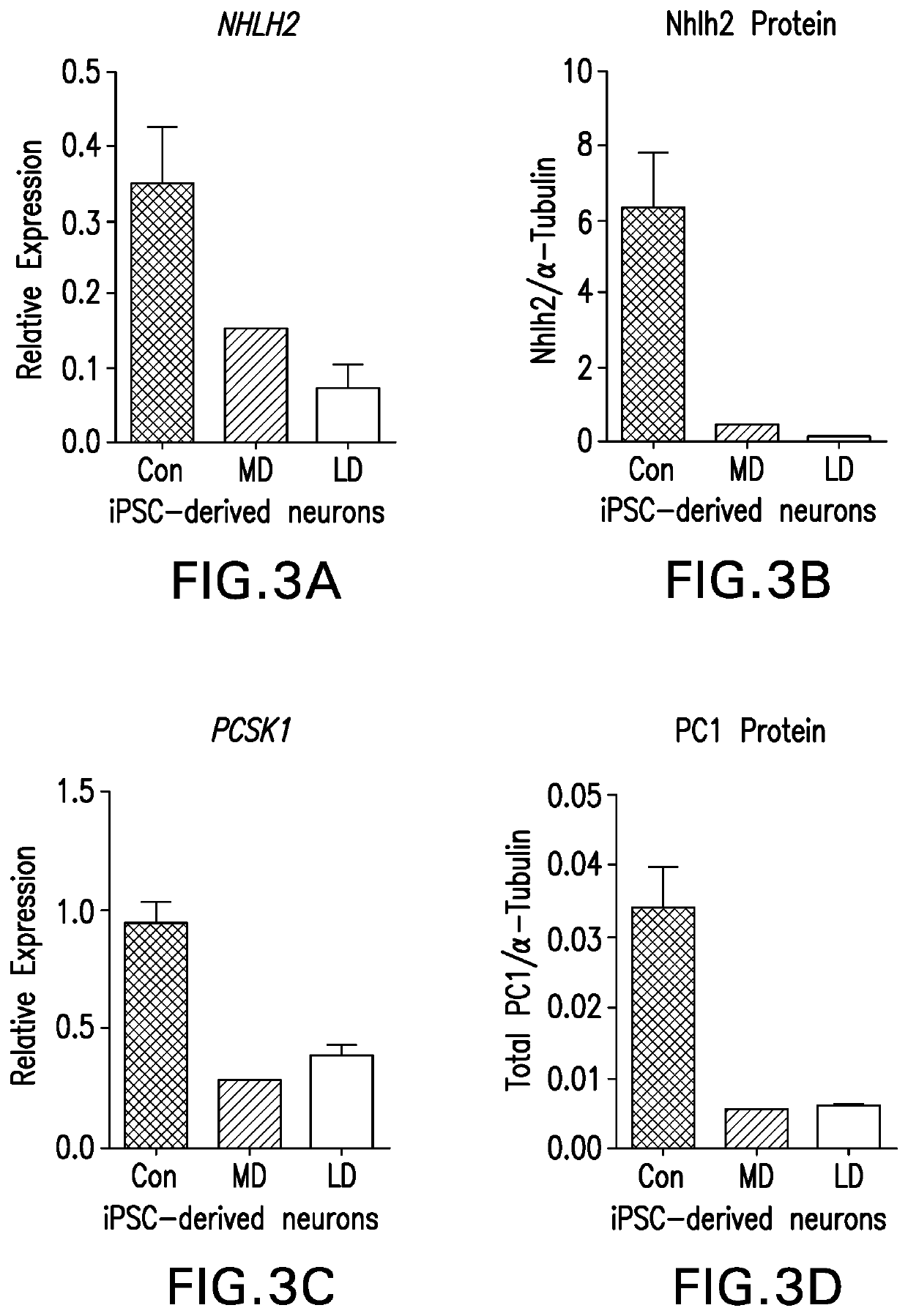Methods of treating Prader-Willi syndrome
a technology of prohormone conversion and prader-willi syndrome, which is applied in the field of regulating prohormone conversion (pc1), can solve the problems of obesity, hypogonadism, growth failure, and no treatment for pws, and urgently need effective treatment and model systems, and achieves the effects of reducing metabolic rate, poor muscle tone, and reducing growth hormone production
- Summary
- Abstract
- Description
- Claims
- Application Information
AI Technical Summary
Benefits of technology
Problems solved by technology
Method used
Image
Examples
example 1
Manipulation of PC1 Expression and Activity in iPSC-Derived Hypothalamic Neurons and β-Cells
[0095]Cyclase activation by Forskolin and / or inhibition of cAMP catabolism by inhibition of phosphodiesterase (Theophylline, IBMX) will increase PC1 levels in in vitro models of PWS with consequential increases in prohormone processing. The identification of an apparent multi-tissue deficiency in PCSK1 in in vivo and in vitro models of PWS enables rational therapeutic targeting that may alleviate the major neuroendocrine symptoms of PWS (FIG. 1).
[0096]The promoter region of the PCSK1 gene contains two cyclic adenosine monophosphate (cAMP)-response elements (Conkright et al. 2003; Udupi et al. 1998). Agents that increase cellular levels of cAMP increase PCSK1 mRNA and increase the secretion of prohormones processed by PC1 (FIG. 2) (Udupi 1998). Forskolin and Theophylline are two FDA-approved drugs with generally safe treatment profiles in pediatric populations. Forskolin binds to adenylate cyc...
example 2
Confirmatory Molecular Physiology of PC1 Metabolism in Snord116p− / m+, Pc1− / − and Pc1+ / − mice.
[0107]Increasing cAMP levels by adenylate cyclase (AC) activation and concurrent PDE inhibition will increase PC1 levels in ex vivo and in vivo models of PWS, and may consequently increase prohormone processing in the Snord116p− / m+ mouse model of PWS. Because mice with a paternal deletion of Snord116 (a mouse model of PWS) have impaired processing of proinsulin to insulin associated with reductions in PC1 transcript and protein, islets will be isolated from wild type (WT) and Snord116p− / m+ mice and the responses of these cells to Forskolin, Theophylline, and Forskolin+Theophylline will be analyzed. The same manipulations and measurements will be performed as for iPSC-derived β-cells. If proinsulin processing can be rescued in isolated islets from Snord116p− / m+ mice as compared to WT littermates, then investigations of proinsulin processing rescue in Snord116p− / m+ mice treated with Forskolin,...
example 3
Clinical Study of Compounds in Patients with Prader Willi Syndrome (PWS)
[0122]The preliminary design of the proposed clinical study for individuals with PWS is based on the hypothesis that the expression of proconvertase 1 (PC1) in decreased in the neurons of individuals with PWS (Burnett et al. 2017). Experimental in vitro and in vivo exposure to adenylate cyclase agonists and PDE4 inhibitors causes up-regulation of PC1 expression and activity in human stem cell-derived and rodent forebrain neurons, and human fibroblasts. It is anticipated that administration of these drugs will increase the conversion of implicated pro-hormones to active hormones.
[0123]The clinical study will address and illustrate the efficacy of the drug in enhancing the activity of PC1 as follows:[0124]1. To illustrate the effects of the candidate therapeutic agents on the behavioral and the endocrine phenotypes of PWS.[0125]2. To monitor the clinical safely profile of such agents.
Study Design:
[0126]The clinica...
PUM
| Property | Measurement | Unit |
|---|---|---|
| diameter | aaaaa | aaaaa |
| particle size | aaaaa | aaaaa |
| particle size | aaaaa | aaaaa |
Abstract
Description
Claims
Application Information
 Login to View More
Login to View More - R&D
- Intellectual Property
- Life Sciences
- Materials
- Tech Scout
- Unparalleled Data Quality
- Higher Quality Content
- 60% Fewer Hallucinations
Browse by: Latest US Patents, China's latest patents, Technical Efficacy Thesaurus, Application Domain, Technology Topic, Popular Technical Reports.
© 2025 PatSnap. All rights reserved.Legal|Privacy policy|Modern Slavery Act Transparency Statement|Sitemap|About US| Contact US: help@patsnap.com



